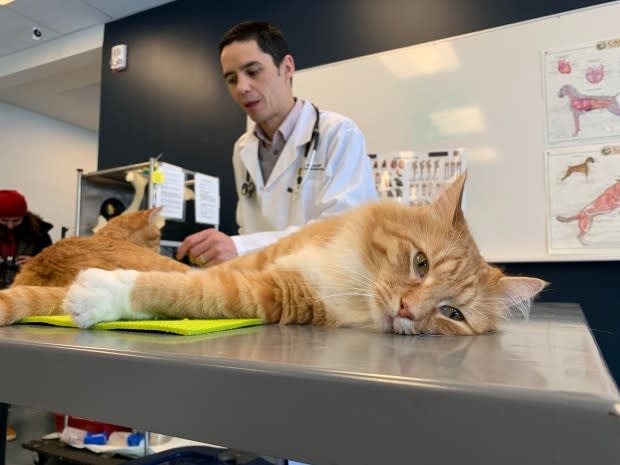Facial expressions of cats reveal their inner moods, study says
Remember Grumpy Cat? For most cat owners and veterinarians, knowing a cat's mood isn't as easy as the popular meme.
However, according to a new study by the University of Calgary and the Université de Montréal, you can now tell a lot about how a cat is feeling from certain facial expressions.
Dr. Daniel Pang, University of Calgary researcher and veterinarian, says he has co-developed, along with Dr. Paulo Steagall, the "Feline Grimace Scale" — which was published in Scientific Reports.
He says the goal of the scale is for veterinarians to be able to identify if your feline friend is experiencing any pain.
"With cats, when they're undergoing the same procedures or surgeries as dogs, they tend to receive less pain relief because we just struggle to identify when they're painful," he told the Calgary Eyeopener on Friday.
"Which, of course, means it's harder to manage their pain as well."

The veterinarian says the study exemplified the key things to look at — like the position of their ears, eyes, muzzle and whiskers.
"They just look as though they have kind of a buildup of tension in their face," he said.
Pang says the scale will also show the level of pain and how extreme it is.
"It really helps veterinarians decide if they should do something about it or not.… Our focus is really on the pain aspect because that's the thing that we all struggle with as veterinarians," he said.

The study has created a free training manual for veterinarians so they can use the Feline Grimace Scale at their practices.
"One of the things we really like about it is it's a scale that seems to be pretty fast to use because we all know everyone's busy at work, and if something takes you more than a minute, you're just not going to do it," he said.
"Hopefully, we'll see that knock-on effects and better benefiting cats as well."
Studying the cats
Don't worry, no cats were harmed in the making of this study.
Pang says the cats that were tested were being brought to the hospital because they were sick or in pain.

"What made it really useful was when we gave the cats pain relief, we could see the changing faces, so see their faces becoming much more relaxed and happy looking," he said.
"It was really that response to pain medication that helped confirm to us that we really were identifying pain."
By identifying this, veterinarians are able to decide how much pain medication to give or whether it's working well.
"A big part of it is if people are not sure of pain presence, they hesitate to decide to do something about it, and a lot of the drugs we use to relieve pain have side-effects," said Pang.
"If you're then worrying about the side-effects, it makes you hesitant or shy to start giving out medication without knowing if the animal really needs it or not."
Wanna find out for yourself?
Pang says the following movements determine whether a cat is in pain:
The ears will rotate back and flatten down.
The eyes will start to squint or close completely.
Facial muscles will get tense, almost as if they're frowning.
They will have pursed lips when they're looking at you.
Their whiskers will bunch up and get pulled back along the sides their face.
Their head is scrunched up and looks depressed.



